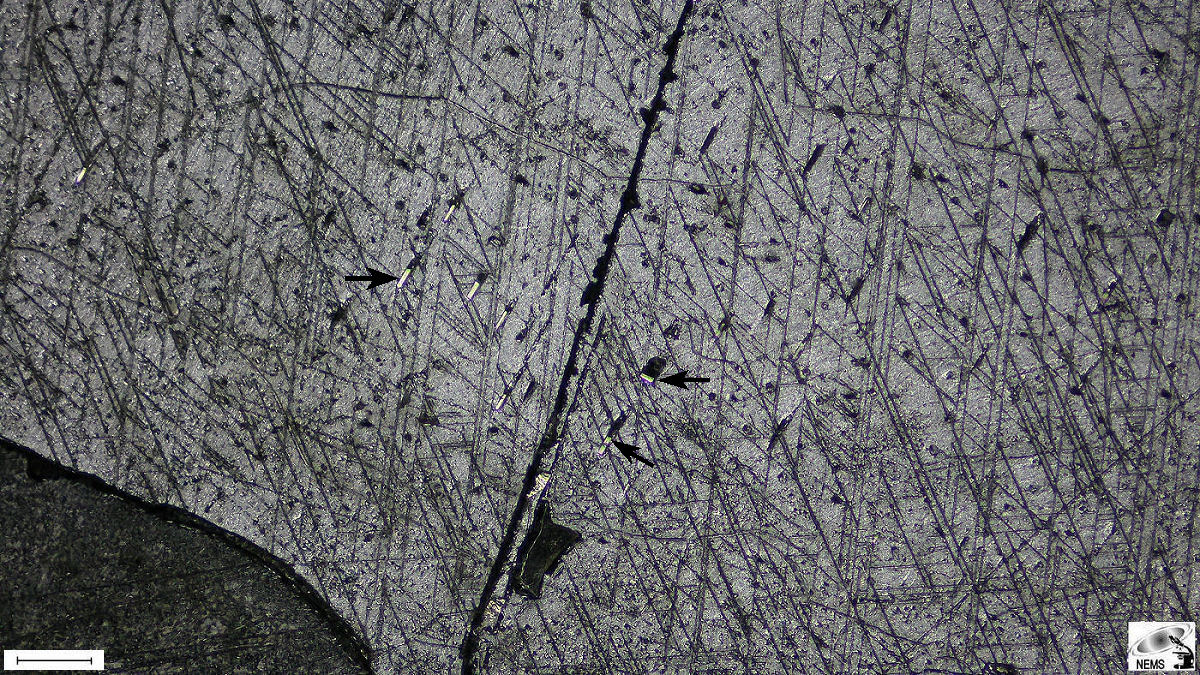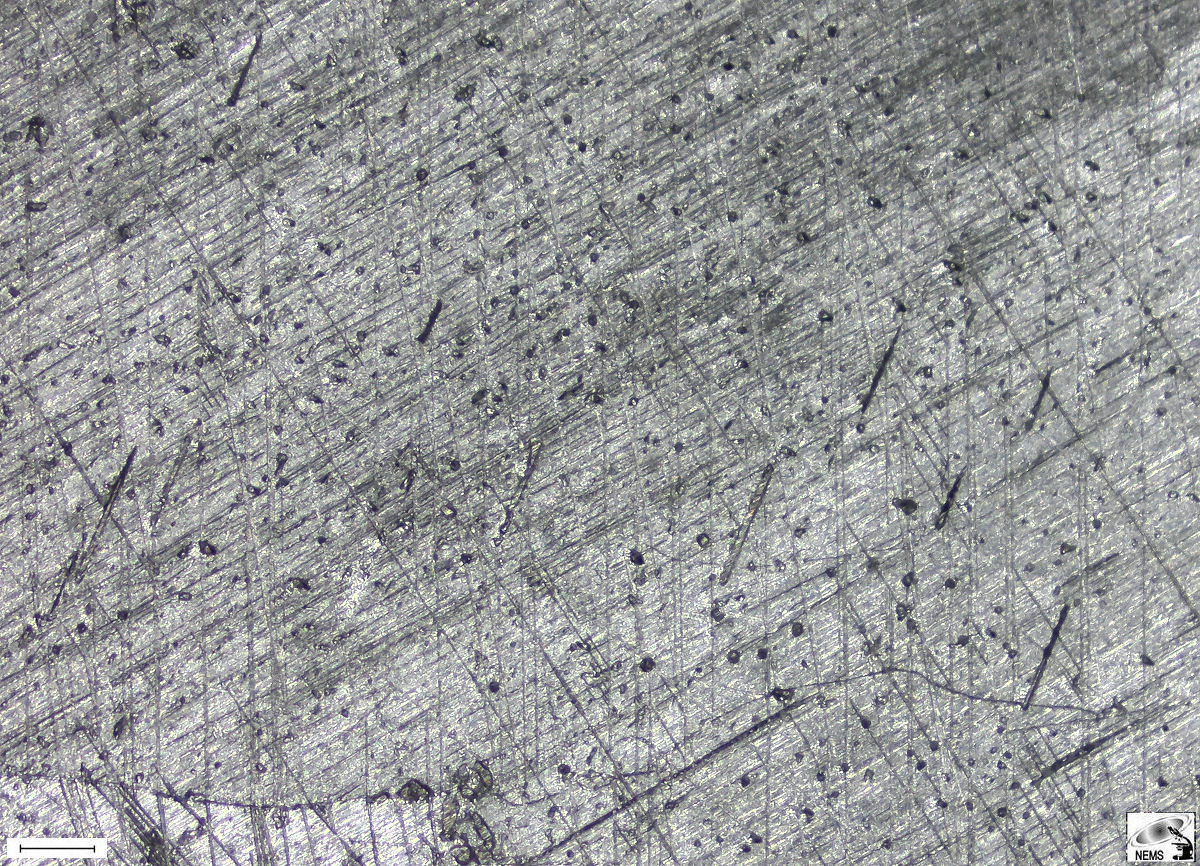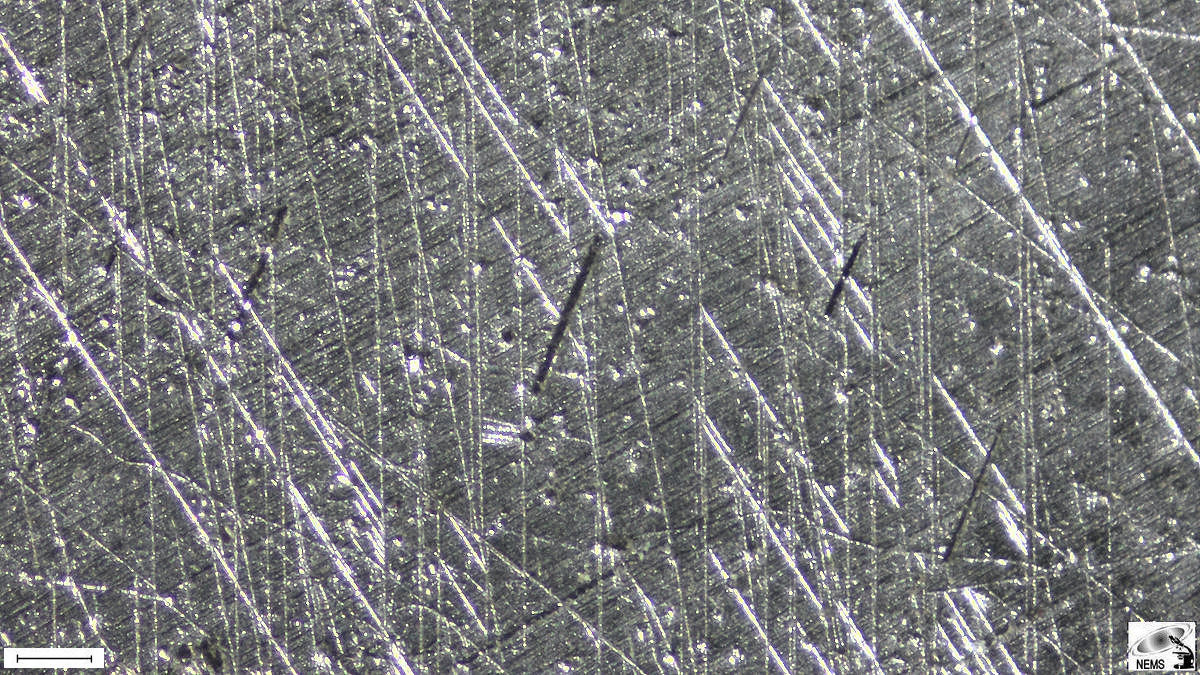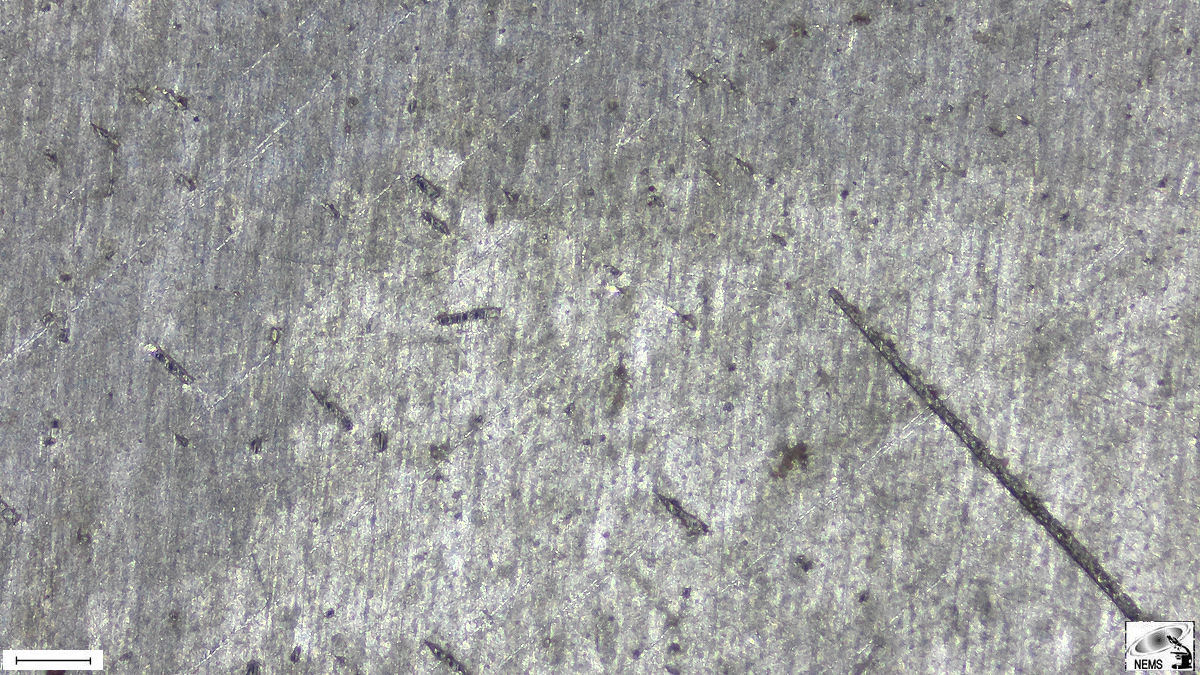Rhabdites and schreibersite are
iron-nickel phosphides that share the same chemical makeup, distinguished
solely by their nucleation locations. Their development, through nucleation and
precipitation, occurs in the solid state following the onset of the gamma-iron
to alpha-iron phase shift, which triggers the formation of the
Widmänstatten pattern.
Schreibersite, with higher nickel content,
forms at the boundaries between kamacite and taenite, whereas rhabdites emerge
via uniform nucleation of (Fe,Ni)3P within kamacite oversaturated with
phosphorus. Both types nucleate at comparable low temperatures, between 400
ºC and 500 ºC.
These phosphides are found in numerous iron
meteorites, though not universally; for example, schreibersite is not observed
in low-nickel IVA irons like Gibeon. When phosphorus exceeds 0.4% (bulk), they
appear as angular, plate-shaped inclusions.
Schreibersite can be either primary or
secondary, while rhabdites are regarded as secondary features. Prismatic
rhabdites will be presented later in this series. .
|



